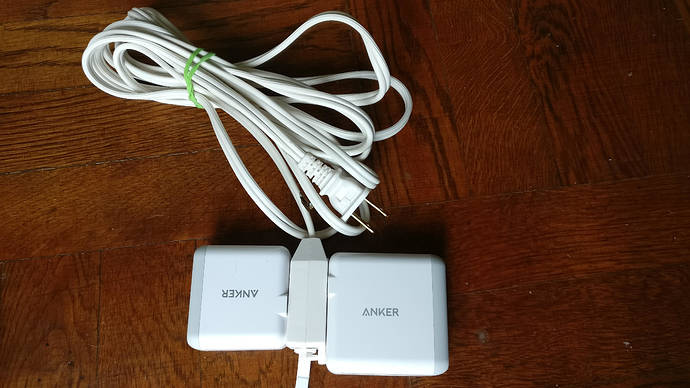Hi! If you’re looking into purchasing one of Anker’s USB wall/desktop chargers, but aren’t sure which one would be the best for your devices, hopefully this guide will help you out.
My goal is to prevent you from becoming like this person because I truly do believe that Anker makes better products, so, without any further ado, let’s get started!
The most important factor that should go into deciding which charger to get is what devices you’re planning on charging with the product.
-iPhones/iPads, Quick Charge compatible devices (most Android phones), or USB-C devices?
Then, you want to start thinking about how many devices you could potentially have to charge at once (how many ports you’ll be needing). Finally, do you want a wall charger (one that plugs directly into the outlet), or a “desktop charger,” as Anker calls them, which simply means that there is a cord that runs from the outlet to the charging hub itself. These are present on the chargers with more ports.
If iPhone/iPad only, then you might want to consider one of the following chargers.
-2 port (wall)
-4 port (wall)
-5 port (desktop)
-6 port (desktop)
-10 port (desktop)
Another innovative Anker product is their PowerCore Fusion, which serves as a hybrid between a wall charger and a portable charger. Check it out!

*Note that all of these chargers are also compatible with Android devices. They just might not charge as fast as their full potential.
With that being said, if you’re going to be charging one or more Android devices, then I’d strongly recommend the following chargers:
-2 port (both are QC, wall)
-4 port (only 1 is QC, wall)
-5 port (2 are QC, desktop)
*Note that these chargers are also compatible with iPhones and iPads.
If you have a device that uses USB-C, then your options are very limited ATTM, but here are a couple of the best ones:
-1 port (wall, can charge a MacBook at full speed)
Cheaper alternative: 5 port (only 1 is USB-C, desktop, can NOT charge a MacBook at full speed)
*Note that you can also charge USB-C devices with via a USB-A port. It might not be full speed, but all you need is a USB-A to USB-C cable.
Keep in mind that the more ports the charger has, generally speaking, the larger and heavier (and less portable) the charger is.
I will keep the information in this post updated as new products become available.
I hope this information helped you choose which charger to buy! Let me know if you have any questions or share your experience with Anker chargers! Thank you and have a nice day!
Please check out my other buying guide for car chargers!










